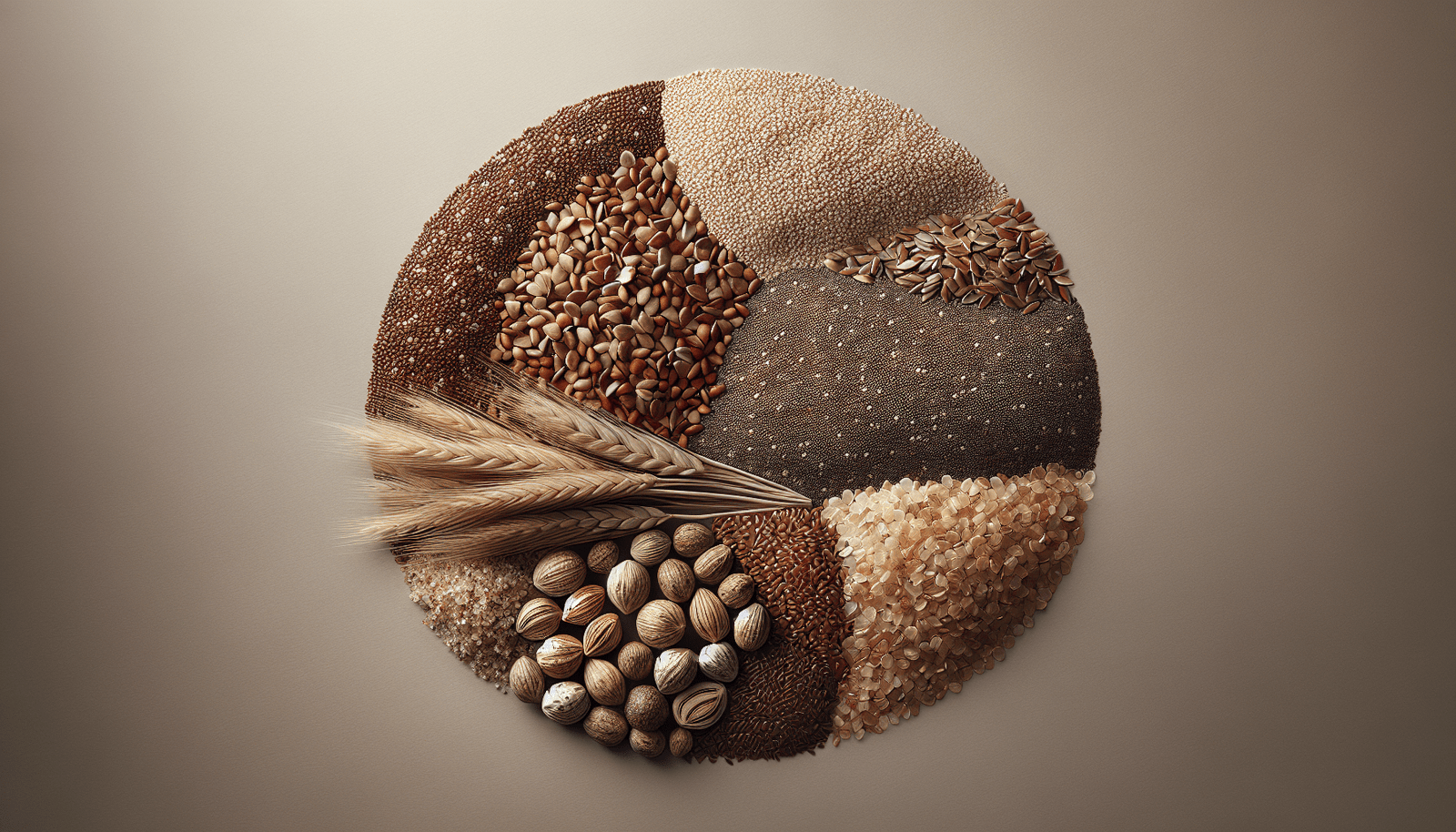Have you ever wondered about the nutritional content of your favorite grains and seeds? If your diet aims to be health-conscious, it’s useful to understand what you’re putting into your body, particularly with regard to oxalates. Grains and seeds are staples in many diets around the world, but these tiny powerhouses can be a significant source of oxalates. Ahead, let’s break down the oxalate content in common grains and seeds so you can make informed decisions for your meals.

Understanding Oxalates
Before diving into the specifics, it helps to clarify what oxalates are. Oxalates are naturally occurring compounds found in many plants. They can bind to minerals such as calcium to form crystals, which, in large quantities, may contribute to kidney stones in some individuals. While one’s body does produce some oxalate, the majority comes from your diet. Exploring their presence in food can help you manage your intake effectively.
Why Grains and Seeds?
Grains and seeds are staples around the world thanks to their nutritional value and versatility. They provide essential nutrients like fiber, proteins, vitamins, and minerals. Yet, certain grains and seeds also contain elevated levels of oxalates. In examining these everyday foods, you can better balance your nutrient intake according to your dietary needs and health goals.
Common Grains and Their Oxalate Levels
Different grains have varied levels of oxalates, so understanding these distinctions can help guide your dietary choices.
Wheat
Wheat is one of the most ubiquitous grains, present in bread, pasta, and cereals. Typically lower in oxalates than some other grains, wheat still deserves your attention if you are particularly sensitive to oxalates due to its widespread presence in processed foods.
Rice
Rice is a staple for billions and integral to many diets, providing a reliable source of energy. With a lower oxalate content compared to other grains, rice can be a safe choice for those mindful of oxalate intake.
Quinoa
Quinoa, often hailed as a superfood, offers high protein content and essential amino acids. However, its oxalate levels can be moderate to high, so moderation is key, especially for those at risk of kidney stones.
Oats
Oats, often consumed as breakfasts like oatmeal or in baked goods, tend to have lower oxalate values, making them an excellent choice for those looking to avoid high-oxalate foods while maintaining a fiber-rich diet.
Barley
Barley adds a rich, nutty flavor to many dishes and is commonly used in soups and stews. It also boasts low oxalate levels, making it suitable for those with dietary constraints related to oxalate intake.

Seeds: Nutrient-Dense With Oxalate Considerations
Seeds are celebrated for their density in nutrients, including healthy fats, fiber, and protein. However, they also contain varying levels of oxalates.
Chia Seeds
Chia seeds are versatile, making their way into smoothies, salads, and baked goods. They are moderately high in oxalates, thus those watching oxalate consumption might need to manage chia seed portions carefully.
Flaxseeds
Flaxseeds are another superfood, rich in omega-3 fatty acids and fiber. However, their oxalate content is moderate to high, meaning they should be consumed in careful moderation if oxalate intake is a concern.
Sunflower Seeds
Sunflower seeds, a popular snack and salad topping, have a relatively low oxalate level. They are a more manageable option if you’re trying to control oxalate amounts in your diet.
Sesame Seeds
Sesame seeds, known for their nutty flavor and use in various cuisines, possess a higher oxalate level. It’s wise to enjoy these seeds in moderation to prevent excessive oxalate accumulation.
Pumpkin Seeds
Pumpkin seeds, a nutritious snack high in magnesium and zinc, contain moderate levels of oxalates. Regular but measured consumption can keep health risks associated with oxalates at bay.
Table of Common Grains and Seeds With Oxalate Content
Here’s a helpful table summarizing the oxalate levels of some commonly consumed grains and seeds:
| Grain/Seed | Oxalate Level |
|---|---|
| Wheat | Low |
| Rice | Low |
| Quinoa | Moderate-High |
| Oats | Low |
| Barley | Low |
| Chia Seeds | Moderate |
| Flaxseeds | Moderate-High |
| Sunflower Seeds | Low |
| Sesame Seeds | High |
| Pumpkin Seeds | Moderate |

Managing Oxalate Intake in Your Diet
If you need to monitor or reduce your oxalate intake, understanding these levels is a fantastic starting point. It’s essential to balance oxalate-rich foods with those low in oxalates, and ensure you’re drinking adequate water to help your kidneys efficiently process oxalates.
Tips to Reduce Oxalate Risks
-
Hydration is Key: Always maintain good hydration to assist your body in washing away excess oxalates.
-
Calcium Pairing: Consuming calcium-rich foods with oxalate foods can help form insoluble oxalate salts in the stomach and intestines, reducing oxalate absorption.
-
Diverse Diet: Include a broader variety of low-oxalate fruits, vegetables, grains, and seeds to maintain nutritional balance.
-
Pre-soaking Grains and Seeds: Soaking can help decrease the oxalate content and improve mineral absorption.
-
Cooking Techniques: Boiling and steaming can reduce oxalate levels in particular food items, such as spinach and certain grains.
-
Check With a Professional: Consulting a dietitian or healthcare provider for personalized dietary advice can be insightful for those with specific health concerns.
Conclusion
Understanding the oxalate content in common grains and seeds offers insight into making more informed dietary choices. Armed with this knowledge, you can cherish the nutritional benefits of grains and seeds while managing your oxalate intake effectively. As with most health-related matters, balance is vital. Seek a varied diet that satisfies both your taste buds and nutritional needs, all while considering your health priorities. With these insights in mind, you’re better equipped to navigate the fascinating world of grains and seeds with confidence.


